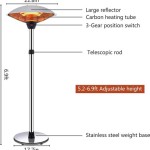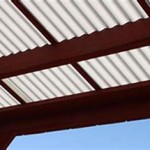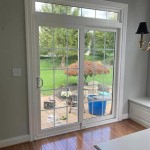Durable Patio Furniture: A Comprehensive Guide to Longevity and Style
Selecting patio furniture represents a significant investment, impacting the aesthetics and functionality of outdoor living spaces. Durability is a primary consideration, ensuring the furniture withstands environmental stressors and resists wear and tear over extended periods. This article provides a comprehensive overview of factors contributing to the durability of patio furniture, including materials, construction, and maintenance practices.
Understanding Material Properties and Their Impact on Durability
The choice of material fundamentally determines the longevity and resilience of patio furniture. Different materials exhibit varying degrees of resistance to moisture, sunlight, temperature fluctuations, and physical damage. Careful consideration of these properties is crucial when selecting furniture for specific outdoor environments.
Aluminum: Aluminum furniture is known for its lightweight nature and inherent resistance to rust. Powder-coated aluminum provides an additional layer of protection against corrosion and scratches, enhancing its durability. Wrought aluminum, which is more robust than tubular aluminum, offers greater strength and stability. While aluminum is generally durable, it can dent or bend under excessive weight or impact.
Steel: Steel furniture, particularly wrought iron and stainless steel, is exceptionally strong and durable. Wrought iron possesses a classic aesthetic but is prone to rust if not properly treated. Stainless steel, with its inherent corrosion resistance, is a superior option for longevity, although it can be more expensive. Regular cleaning and application of protective coatings are necessary to prevent rust and maintain the furniture's appearance.
Wood: Wood offers a natural aesthetic and can be highly durable if the right species are selected. Teak, known for its high oil content, is exceptionally resistant to rot, insects, and moisture. Other durable wood options include cedar, redwood, and eucalyptus. However, even durable woods require regular sealing or staining to protect them from weathering and maintain their structural integrity. Untreated wood can warp, crack, or fade over time.
Resin Wicker: Resin wicker, also known as all-weather wicker, is a synthetic material designed to mimic the look of natural wicker while offering superior durability. It is typically made from high-density polyethylene (HDPE) or polyvinyl chloride (PVC), which are resistant to moisture, fading, and cracking. Resin wicker furniture is lightweight, easy to clean, and requires minimal maintenance. However, the quality of resin wicker varies; higher-quality HDPE resin is more durable and resistant to cracking than lower-quality PVC resin.
Concrete and Stone: Concrete and stone furniture offer exceptional durability and stability. These materials are resistant to weathering, pests, and physical damage. Concrete furniture can be heavy and difficult to move, but its weight provides stability in windy conditions. Stone furniture, such as granite or marble, is aesthetically pleasing and can withstand extreme temperatures. However, both concrete and stone can be porous and may require sealing to prevent staining and water damage.
Examining Construction Methods and Structural Integrity
The construction methods employed in assembling patio furniture significantly influence its overall durability. Strong joints, reinforced frames, and quality hardware contribute to the furniture's ability to withstand stress and maintain its structural integrity over time.
Welded Joints: Welded joints provide the strongest and most durable connections in metal furniture. Look for clean, consistent welds without any gaps or cracks. Poorly welded joints are susceptible to failure under stress, compromising the furniture's stability.
Bolted Connections: Bolted connections are commonly used in assembling wooden and metal furniture. Ensure that the bolts are made of rust-resistant materials, such as stainless steel or galvanized steel. Regularly check and tighten bolts to prevent loosening due to vibration and movement.
Mortise and Tenon Joints: Mortise and tenon joints are traditional woodworking techniques that provide strong and durable connections in wooden furniture. In this method, a tenon (a projecting piece of wood) is fitted into a mortise (a hole or recess). This type of joint is particularly resistant to racking and twisting forces.
Frame Reinforcement: Reinforcement of the furniture frame with additional supports or bracing enhances its overall strength and stability. Look for features such as crossbars, gussets, and corner blocks, which help to distribute weight and prevent warping or bending.
Quality Hardware: The quality of the hardware used in assembling patio furniture plays a crucial role in its durability. Rust-resistant screws, bolts, and hinges are essential for preventing corrosion and ensuring the furniture's longevity. Avoid furniture with flimsy or poorly made hardware, as it is likely to fail prematurely.
Upholstery and Cushions: For upholstered patio furniture, the choice of fabric is paramount for durability. Outdoor fabrics should be UV-resistant, water-repellent, and mildew-resistant. Look for fabrics made from acrylic, olefin, or solution-dyed polyester, which are designed to withstand the rigors of outdoor use. The cushions should be filled with quick-drying materials, such as polyurethane foam or polyester fiberfill, to prevent water retention and mildew growth.
Implementing Effective Maintenance Practices for Extended Lifespan
Regular maintenance is essential for preserving the durability and appearance of patio furniture. Proper cleaning, protection from the elements, and timely repairs can significantly extend the furniture's lifespan.
Regular Cleaning: Regular cleaning removes dirt, grime, and other contaminants that can damage the furniture's surface. Use a mild soap and water solution to clean most types of patio furniture. For tougher stains, consider using a specialized cleaner designed for the specific material. Avoid using harsh chemicals or abrasive cleaners, as they can damage the finish.
Protective Covers: Protective covers shield patio furniture from the elements, including rain, snow, sun, and wind. Covers are particularly important for protecting furniture during the off-season or when it is not in use. Choose covers made from breathable, water-resistant materials to prevent moisture buildup and mildew growth.
Seasonal Storage: Storing patio furniture indoors or in a sheltered area during the winter months can significantly extend its lifespan. Before storing the furniture, clean it thoroughly and allow it to dry completely. Cover the furniture with protective sheets or blankets to prevent dust and scratches.
Rust Prevention: For metal furniture, rust prevention is crucial. Regularly inspect the furniture for signs of rust and address any issues promptly. Clean rusted areas with a wire brush and apply a rust-inhibiting primer and paint. Consider using a rust-preventative spray on exposed metal surfaces.
Wood Treatment: Wooden patio furniture requires regular treatment to protect it from weathering. Apply a sealant, stain, or oil to the wood every year or two, depending on the climate and the type of wood. This will help to prevent warping, cracking, and fading. Follow the manufacturer's instructions for applying the chosen treatment.
Upholstery Care: Regularly clean upholstered patio furniture to remove dirt, stains, and mildew. Use a vacuum cleaner to remove loose debris and a mild soap and water solution to clean the fabric. For stubborn stains, consider using a fabric stain remover. Allow the fabric to air dry completely before using the furniture.
Repair and Restoration: Address any damage to patio furniture promptly to prevent it from worsening. Repair broken welds, tighten loose bolts, and replace damaged or worn-out parts. Consider consulting a professional furniture restorer for more extensive repairs or restoration projects.
Beyond these primary considerations, factors like the furniture's design and intended use also influence its durability. Simple designs with fewer moving parts tend to be more durable than complex designs. Furniture intended for heavy use should be constructed from more robust materials and with stronger construction methods. By carefully considering these factors and implementing appropriate maintenance practices, individuals can select and maintain durable patio furniture that enhances their outdoor living spaces for years to come.

Patio Furniture Guide The Home Depot

Highly Rated Water Resistant Outdoor Patio Furniture

The 7 Most Durable Outdoor Furniture Frames Elegance Patio Design Center

Outdoor Patio Furniture Which Frame Material Is Right For Me All American Pool And Blogall Blog

What Kind Of Patio Furniture Is Most Durable

Outdoor Furniture With Durable Rope Woven Chair Commercial Used Restaurant Dining Armchairs China Leisure Patio Garden Made In Com

The Best Patio Furniture And How To For It Reviews By Wirecutter

Outdoor Patio Furniture From Homecrest Western S

Top Five Durable Types Of Outdoor Patio Furniture

Resin Wicker Patio Furniture Crate Barrel








